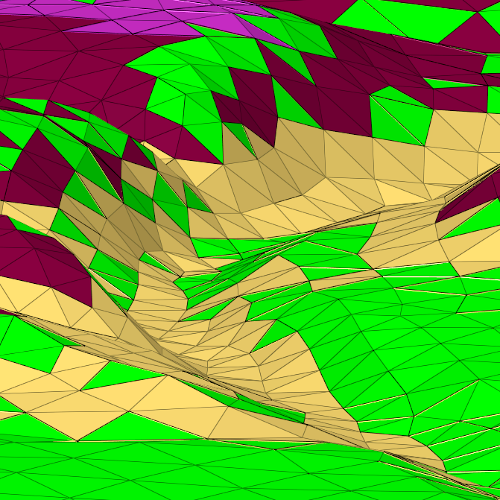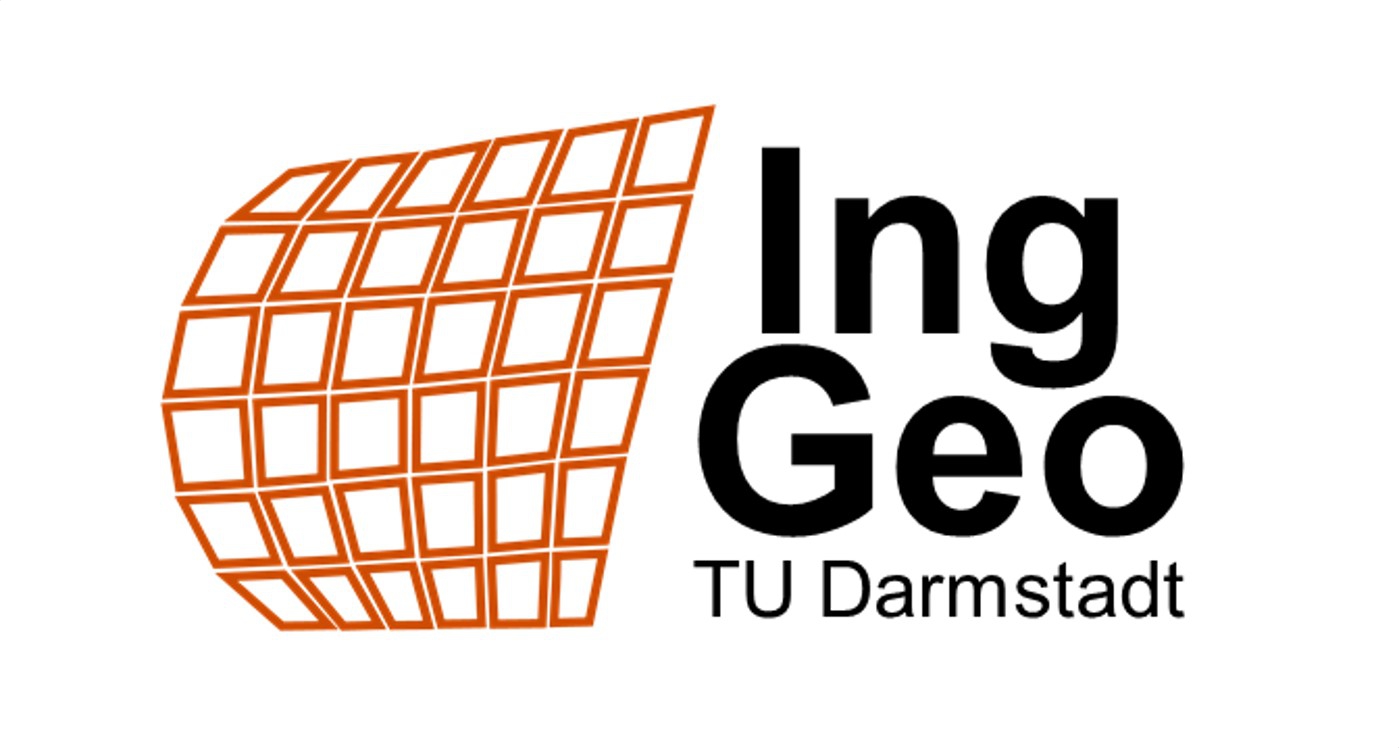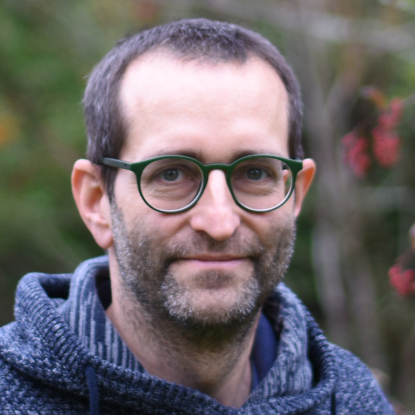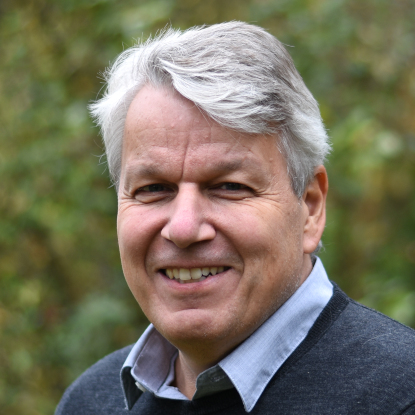
Facts about the project
Project manager: Dr. Karsten Reiter +++ Duration: ongoing +++ Project funding: Geostress in cooperation with Nagra (National Co-operative for the Disposal of Radioactive Waste)
Knowledge of the stress state in the subsurface is essential when planning large-scale excavations with regard to the structural feasibility, design and stability of the cavities. In connection with a repository for radioactive waste, the stress state also plays an important role in numerous other aspects. In Switzerland, several geological siting areas have been identified as possible locations for such a repository. The Nördlich Lägern site was proposed as a site in 2022 by the National Cooperative for the Disposal of Radioactive Waste in Switzerland (NAGRA).
Detailed geomechanical-numerical models were created for each of the three investigated sites Jura Ost, Nördlich Lägern and Zürich Nordost. The models consist of almost twenty, mostly slightly inclined stratigraphic units, which are characterized by their density and mechanical properties. These are intersected by several tectonic faults of different orientations. Each model volume is discretized into linear hexahedron and tetrahedron elements. The models consist of approx. 2 to 3 million elements. The finite element method is used to calculate the equilibrium of forces of the model in balance with the gravity and the far-field forces. The models are calibrated to model-independent data and can be used to predict the recent stress state.
- Reiter, K., Heidbach, O., Ziegler, M., Giger, S., Garrard, R., and Desroches, J.: Stress state estimation – new data and variability assessment of model results, Saf. Nucl. Waste Disposal, 2, 71–72, https://doi.org/10.5194/sand-2-71-2023, 2023.
- Reiter, K., Heidbach, O., Ziegler, M., Giger, S., Garrard, R., and Desroches, J.: Stress state estimation – variability assessment of model results, GeoBerlin 2023, 2023.
- Reiter, K., Heidbach, O., Ziegler, M., Giger, S., Garrard, R., and Desroches, J.: If you get the stress data, you've always asked for, EGU General Assembly 2023, Vienna, Austria, 24–28 Apr 2023, EGU23-13718, https://doi.org/10.5194/egusphere-egu23-13718, 2023.
- Reiter, K., Heidbach, O., Ziegler, M., Giger, S., Garrard, R., Desroches, J. (2023): If you get the stress data, you've always asked for. Wien, Copernicus, EGU General Assembly, Wien, 23.04.2023 – 28.04.2023, DOI: 10.5194/egusphere-egu23-13718, 2023.
- Heidbach, O., Ziegler, M. O., Morawietz, S., Reiter, K., Röckel, L., Cotton, F., 2021, Standortsuche im Spannungsfeld. System Erde, 11(2), 12–17. https://doi.org/10.48440/GFZ.syserde.11.02.2
- Reiter, K. and Heidbach, O.: Stress field perturbations from faults, EGU General Assembly 2021, online, 19–30 Apr 2021, EGU21-10155, https://doi.org/10.5194/egusphere-egu21-10155, 2021.
- Heidbach, O., Reiter, K., Giger, S., 2019, Impact of fault properties and fault implementation strategies on results of 3D geomechanical-numerical models, NIB 19-22, 53p, NAGRA; Wettingen.
- Heidbach, O., Hergert, T., Reiter, K., 2019, Local stress field sensitivity analysis – case study Jura Ost, NIB 19-15, 83p, NAGRA; Wettingen
- Heidbach, O., Hergert, T., Reiter, K., 2019, Local stress field sensitivity analysis – case study Zürich Nordost & Südranden, NIB 19-14, 82p, NAGRA; Wettingen
- Reiter, K., Hergert, T., Heidbach, O., 2017. Stress variation within stratigraphic sequences – a site selecting factor for nuclear waste repositories, GeoBremen 2017, 24-29. September 2017, Bremen, Germany
- Reiter, K., Hergert, T., Heidbach, O., 2016. Stress field sensitivity analysis within Mesozoic successions in the Swiss Alpine foreland using 3-D-geomechanical-numerical models, EGU General Assembly, 17-22 April 2016, Vienna, Austria.
- Hergert, T., Heidbach, O., Reiter, K., Giger, S. B., and Marschall, P., (2015). Stress field sensitivity analysis in a sedimentary sequence of the Alpine foreland, northern Switzerland, Solid Earth, 6, 2, 533-552, doi: 10.5194/se-6-533-2015.
- Heidbach, O., Hergert, T., Reiter, K., Giger, S.B., Marschall, P., 2015. 3D stress field sensitivity analysis on the scale of geological siting regions in Northern Switzerland with focus on Opalinus Clay, 6th International Clay Conference – Clays in natural and engineered barriers for radioactive waste confinement, March 23-26 2015, Brussels, Belgium, (oral presentation).
- Hergert, T., Heidbach, O., Reiter, K. & Giger, S. B., 2015. Stress Field Sensitivity Analysis at a Reservoir Scale (Northern Switzerland) Using Numerical Geomechanical Modelling, 2nd EAGE Workshop on Geomechanics and Energy – The Ground as Energy Source and Storage, 13-15 October 2015, Celle, Germany (oral presentation).
- Heidbach, O., Hergert, T., Reiter, K., & Giger, S., 2014, Local stress field sensitivity analysis—Case Study Nördlich Lägern, NAB 13-88, 50p, NAGRA, Wettingen.
- Heidbach, O., Hergert, T., Reinecker, J., Reiter, K., Giger, S.B., Vietor, T. & Marschall, P., 2013, In Situ Stress in Switzerland – From Pointwise Field Data to a 3D Continuous Quantification, International Workshop on Geomechanics and Energy – The Ground as Energy Source and Storage, EAGE, Lausanne, Swiss (oral presentation).
Status Quo & Outlook
The set-up of the models is largely complete. We are currently still working on the evaluation and some special model variations.



